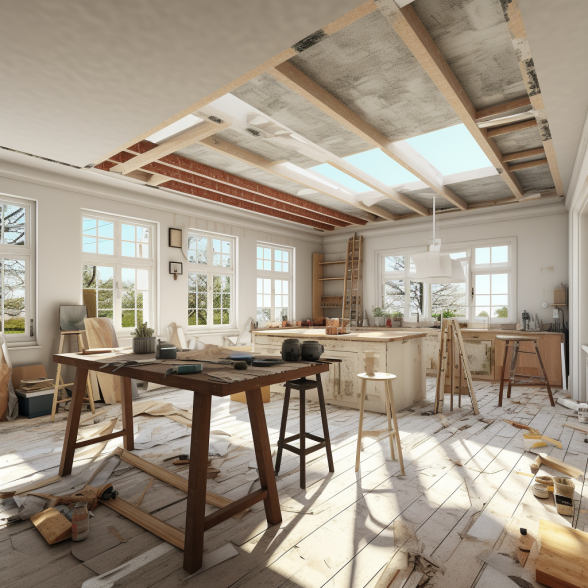
Major Remodels vs. Minor Upgrades: Permit Requirements
While extensive remodeling often necessitates permits, there are numerous small-scale projects that you can undertake without needing to navigate the permit process. Such projects typically include:
- Interior enhancements like installing new storage solutions, cabinetry, or repainting.
- Exterior updates such as repaving your driveway or painting the exterior of your house.
- These projects are considered non-extensive and generally do not impact your home's structural integrity or safety aspects.
Types of Permits in Home Remodeling
Understanding different types of permits is crucial. Here are some common ones:
- Building Permits: Required for significant structural changes, such as adding rooms or converting spaces into habitable areas.
- Zoning Permits: Necessary for alterations that affect the exterior footprint, like driveways or patios.
- Mechanical Permits: For changes to heating or cooling systems.
- Electrical Permits: Required for major electrical work, including new installations or extensive repairs.
- Plumbing Permits: Necessary for significant plumbing work, including new installations or major repairs.
The Importance of Obtaining Permits
Permits make sure that your remodeling follows safety standards and local regulations. Skipping permits can lead to fines and problems when selling your home and may even invalidate your homeowner's insurance.
Permit-Free Remodeling Projects
Here's a look at some remodeling tasks that usually don't require a permit:
Interior Projects:
- Installing new flooring like hardwood, carpet, or vinyl.
- Painting or wallpapering walls.
- Replacing wall, floor, or ceiling coverings.
- Upgrading kitchen countertops or faucets.
- Bathroom repairs, such as replacing faucets or toilets.
Exterior Projects:
- Most landscaping work.
- Installing playground structures, insulation, or storm windows.
- Repainting the exterior or replacing the siding.
- Minor roof repairs (less than 15% of the total roof area).
- Installing gutters or downspouts.
- Building small, non-habitable structures like tool sheds (under certain size limits).
How to Determine if Your Project Needs a Permit
When in doubt, it's best to consult with a professional. Expert remodelers and designers can provide valuable insights into whether your project requires a permit. They can also manage the permit process for you if needed. So, Parceloop will help you with this journey. This online platform helps homeowners:
- Select the correct type of development for their project.
- Define the scope of work, ensuring compliance with local regulations.
- Inform about any necessary building permits.
- Access cost estimation tools for budget planning.
- Connect with a network of trusted professionals.
- Compile and export a comprehensive project summary.
With the right planning and tools, your home remodeling project can be both exciting and compliant with American laws, ensuring a smooth and successful transformation of your living space.
In essence, Parceloop's contribution to reducing stress and enhancing efficiency in remodeling and other home improvement projects cannot be overstated. Its role in harnessing technology and innovation to simplify and modernize the traditional permit application process marks a significant advancement in how Californians approach remodeling and construction projects.